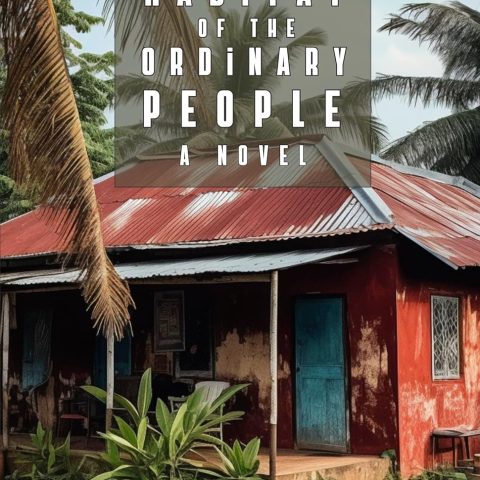By Sokari Ekine | with thanks to BlackLooksSunday, February 3, 2013.Last week I visited two clinics in Cite Soleil. The first was a pediatric clinic which is part of a complex run by the Catholic church for the past 37 years. In addition to the clinic which sees pre-natal mothers and children up to 5, there is a free primary school and a women’s training and work center. Despite the media’s representation of Cite Soleil as a dangerous space, I have always found it calm and friendly and have yet to meet anyone who says otherwise.
Like much of the media reports on Haiti, events are rarely contextualised accurately and Haitians are presented as being undisciplined and violent or as ‘famous’ US journalist, Amy Wilentz, described them “poor, needy and desperate” – but this fits well into the victim narrative so thats OK! Nonetheless Cite Soleil residents have a history of protest against violent repression and more recently from the UN following the 2004 coup against President Aristide as depicted in Kevin Pina’s film “We Must Kill the Bandits“. And yes there is gang violence and it can be a dangerous place for youths in particular, much as the streets of cities in the US and Europe – Miami, Chicago, London and Paris are zones of violence against youth. But the deeper violence that seeps into everything and that kills people is poverty.The complex consists of a large compound with low rise buildings – classrooms for adults, the workshops, dinning halls, playgrounds and the clinic – set amongst palm trees and flower gardens. There is a sense of tranquility both in the outside areas and in the classrooms and clinic rooms. The clinic along with nearby St Catherine’s Hospital, serves the whole of Cite Soleil and beyond. By far the majority of children who attend the clinic are suffering from poverty related illnesses or illnesses aggravated by poverty – dirty and insufficient water, poor or non-existent sanititation facilities, and lack of protein diets. Illnesses such as anemia, malnutrition, TB, parasites and diarrhea. Often illnesses lead to a needless death as in the case of 2 year old Elie Joseph. In February 2012, Elie Joseph was diagnosed by Doctor John Carroll, with a heart murmur which he explained as a common congenital heart defect called ventricular septal defect [VSD] where the blood flows the wrong way, putting stress on the heart and lungs which can lead to infections. Dr Carroll who runs a charity Haitian Hearts, which sends children suffering from heart related illnesses to the Dominican Republic or the US, arranged for Elie to travel to the Dominican Republic for the 15 minute procedure which would fix his heart. Elie received his travel documents but not his mother so he was unable to undertake the operation which would have taken some 4 hours plus the follow up treatment. In December 2012 Elie Joseph died from pneumonia in the tent at Aviation camp where his parents are forced to continue to live three years after the quake. Elie should not have died. Aviation camp is like other camps is so crowded you can hardly move between tents, there are pools of stagnant water and rotting garbage everywhere.Sometimes even those who claim to be ‘helping’ do so with paternalistic disdain. Like the person I met at a nearby mission which includes a hospice for men and women HIV/AIDS patients. I can’t say t his view was shared by others who worked there, but it was shocking to hear someone supposedly caring for the dying blaming their illness on ”Haitians lack of morality”.It seems to me that no matter the level of health care available without addressing the underlying poverty, any health care is ‘bandaid’ medicine and yes a bandaid is better than nothing but people deserve something more than ‘better than nothing’. HIV /AIDS patients arrive very sick many on the verge of death. They are treated, fed and made relatively well. Then they return home back home to the same environment that brought them to the hospice in the first place so its not surprising when they soon die or return once again for a three months break from poverty.Thousands and thousands of people, maybe even hundreds of thousands, have been disappeared in Haiti over the past 50 years. The obsensity of the living conditions and insufficient though often excellent, health provision largely lies in the fact of $billions of disappeared monies and the building of monuments to aid workers such as the Clinton Foundation funded, Hotel Oasis.
Send to a friend | �
View/Hide Comments (0) | �






pharmacies in mexico that ship to usa: pharmacies in mexico that ship to usa – mexican mail order pharmacies
buying from online mexican pharmacy
http://cmqpharma.com/# purple pharmacy mexico price list
п»їbest mexican online pharmacies
Very interesting info!Perfect just what I was searching for!Raise your business
https://foruspharma.com/# mexico drug stores pharmacies
pharmacy website india: top 10 pharmacies in india – cheapest online pharmacy india
canadian pharmacy scam buying drugs from canada canadian pharmacy drugs online
mexican pharmaceuticals online: mexico pharmacies prescription drugs – п»їbest mexican online pharmacies
canadian pharmacy online reviews: pharmacy rx world canada – canadian pharmacy 24 com
canadian drugs pharmacy best online canadian pharmacy canada online pharmacy
https://indiapharmast.com/# Online medicine home delivery
canadian pharmacy king reviews: northwest canadian pharmacy – canadian pharmacy uk delivery
canadian drugs: canadian drug pharmacy – canadian drug stores
top 10 online pharmacy in india best india pharmacy cheapest online pharmacy india
п»їlegitimate online pharmacies india: indian pharmacy – indian pharmacies safe
https://indiapharmast.com/# buy medicines online in india
reputable mexican pharmacies online: mexican drugstore online – best online pharmacies in mexico
best online pharmacies in mexico buying prescription drugs in mexico online medication from mexico pharmacy
safe reliable canadian pharmacy: canadian pharmacy – best canadian pharmacy to buy from
mexico pharmacies prescription drugs: mexican drugstore online – pharmacies in mexico that ship to usa
http://paxloviddelivery.pro/# paxlovid covid
http://clomiddelivery.pro/# buy clomid without prescription
https://paxloviddelivery.pro/# paxlovid for sale
buy cipro online usa: buy ciprofloxacin over the counter – buy cipro
https://clomiddelivery.pro/# how to buy clomid no prescription
http://clomiddelivery.pro/# cost of generic clomid no prescription
where to buy clomid prices: how can i get cheap clomid – cost of clomid pill
https://amoxildelivery.pro/# amoxicillin online pharmacy
This is my first time pay a quick visit at here and i am in fact impressed to read everthing at one
place.
https://ciprodelivery.pro/# ciprofloxacin 500mg buy online
order cheap clomid for sale: clomid pill – order clomid pills
http://amoxildelivery.pro/# price of amoxicillin without insurance
buy cheap amoxicillin: amoxicillin pills 500 mg – amoxicillin 500mg pill
https://clomiddelivery.pro/# can i get clomid no prescription
amoxicillin price without insurance: buy amoxicillin online without prescription – amoxicillin without prescription